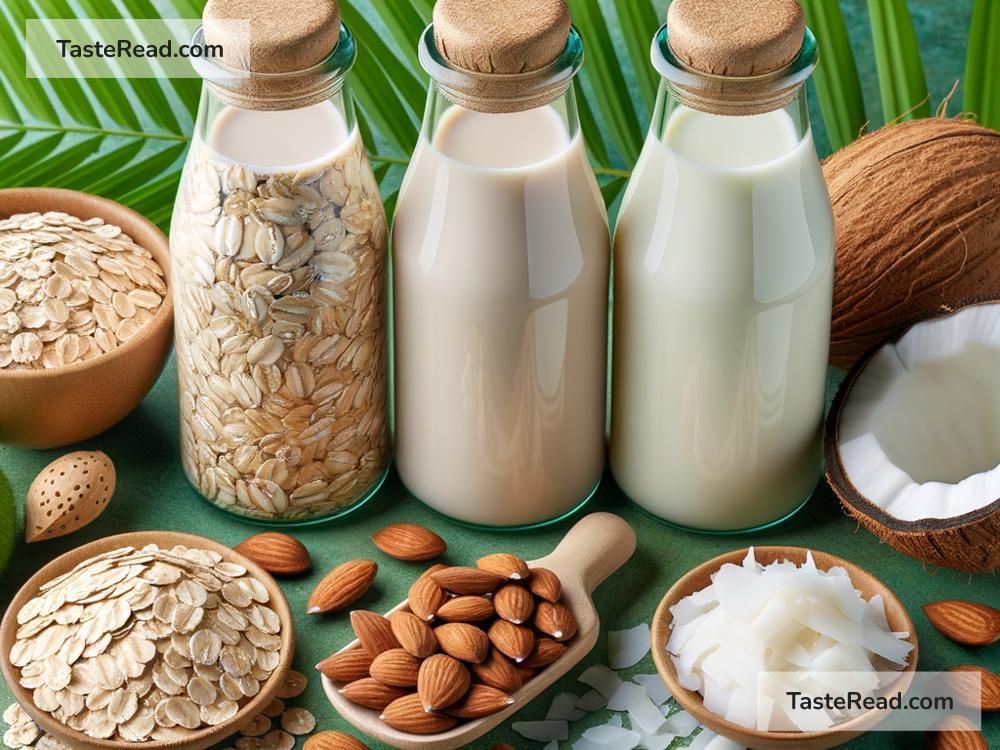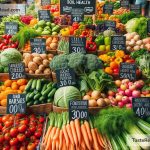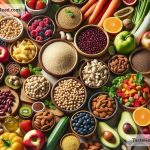The Easy Guide to Choosing Low-Carbon Impact Dairy-Free Ingredients
In recent years, a spotlight has been shone on the way we live and how it affects the planet. Among various sectors scrutinized for environmental impact, the food industry, particularly animal agriculture, draws significant attention. This has led many to turn to dairy-free diets not just for health or ethical reasons but to tread lightly on Earth. If you’re interested in contributing positively to the environment by adjusting your diet, choosing low-carbon impact, dairy-free ingredients is a splendid starting point. Let’s dive into how you can make these choices without feeling overwhelmed.
Understanding the Carbon Footprint of Dairy
Firstly, it’s crucial to comprehend why dairy products have a high carbon footprint. The production of dairy involves raising livestock, which requires significant amounts of water, feed, and land. Furthermore, cows produce methane, a potent greenhouse gas, contributing to global warming. Thus, switching to dairy-free alternatives can significantly reduce your carbon footprint. But, not all dairy-free options are created equal, so making environmentally friendly choices requires some knowledge and consideration.
Opting for Plant-Based Alternatives
Plant-based milk, cheese, and yogurts are readily available and are generally kinder to the planet than their dairy counterparts. Almond milk, soy milk, oat milk, and others don’t require the resources needed to raise animals, which means they usually have a lower carbon output. However, it’s worth noting that some plant-based options have their environmental downsides too. For instance, almond milk requires a lot of water to produce. So, what should you choose?
1. Go for Locally Sourced, Seasonal Ingredients
Transportation is a significant contributor to carbon emissions, so picking ingredients that don’t have to travel far is a win for the environment. This means choosing locally sourced and seasonal plant-based ingredients when possible. For example, if you live in a region where almonds are grown, almond milk might be a more sustainable choice for you compared to someone living where almonds have to be shipped long distances.
2. Consider the Water Usage and Land Efficiency
Soy and oats require less water and land to produce compared to almonds. Oat milk, in particular, has gained popularity not just for its creamy texture but also for its relatively low environmental impact. By choosing plant-based milks and ingredients that are more efficient in terms of water usage and land, you’re making a more sustainable choice.
3. Dive Into the World of Peas
Peas are emerging as an excellent source for dairy-free products, including milks and meat substitutes. They have a small water footprint and can enrich the soil with nutrients, making them an environmentally friendly option. Pea milk and products are worth exploring if you’re interested in innovative and sustainable dairy-free choices.
Reading Labels and Company Ethics
Companies aware of their environmental responsibility often take steps to reduce their carbon footprint. Look for information on packaging or company websites about sustainable practices, such as organic farming, renewable energy use, and minimal packaging. Choosing products from companies committed to sustainability can magnify the positive impact of your dairy-free choices.
Consider DIY Options
One of the most effective ways to ensure your dairy-free ingredients are low-impact is to make them yourself. Homemade plant-based milks, cheese, and yogurts can be less resource-intensive than store-bought ones, especially if you use locally sourced, organic ingredients. Plus, it cuts down on packaging waste. There are plenty of easy-to-follow recipes online to get you started on your DIY dairy-free journey.
A Note on Nutritional Balance
While focusing on the environmental impact, don’t forget about the nutritional aspect. Ensure that your dairy-free alternatives provide the necessary nutrients like calcium, vitamin D, and protein. Many plant-based milks are fortified with these essential nutrients, making them excellent substitutes for dairy.
Final Thoughts
Choosing low-carbon impact, dairy-free ingredients involves a bit of research, mindfulness, and sometimes creativity. By considering the source, efficiency, and company ethics of the dairy-free alternatives, you’re making a conscious effort to protect our planet. Remember, every small step counts. Whether it’s opting for oat milk in your morning coffee or making your own almond milk, these decisions contribute to a larger change. Plus, exploring the diverse world of plant-based ingredients can be an exciting culinary adventure in itself. Here’s to making choices that are kinder to the planet and deliciously satisfying!


